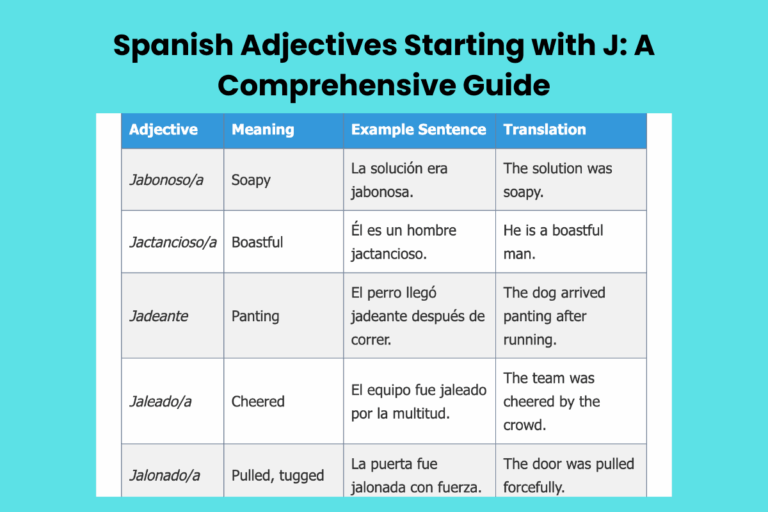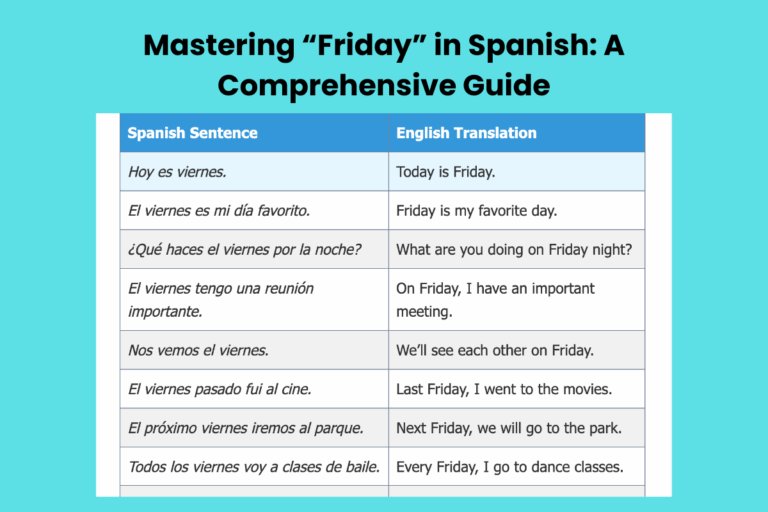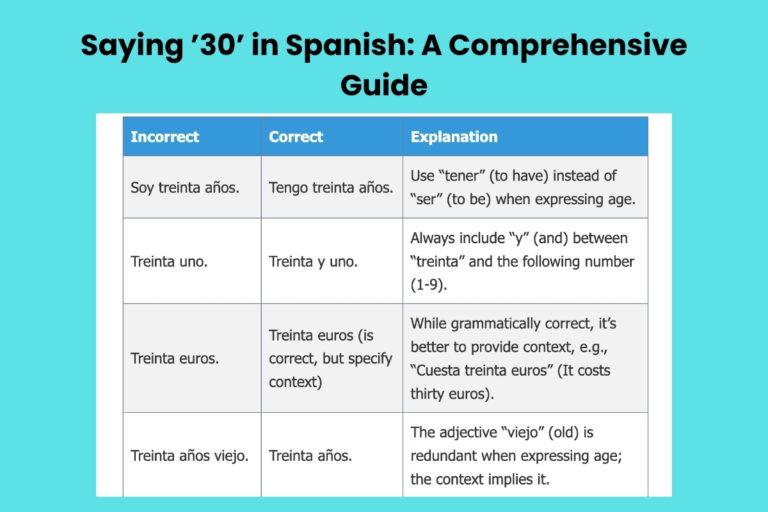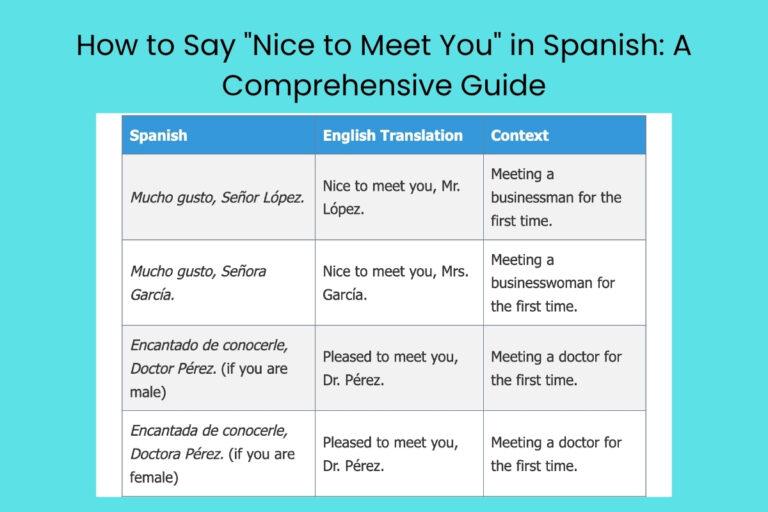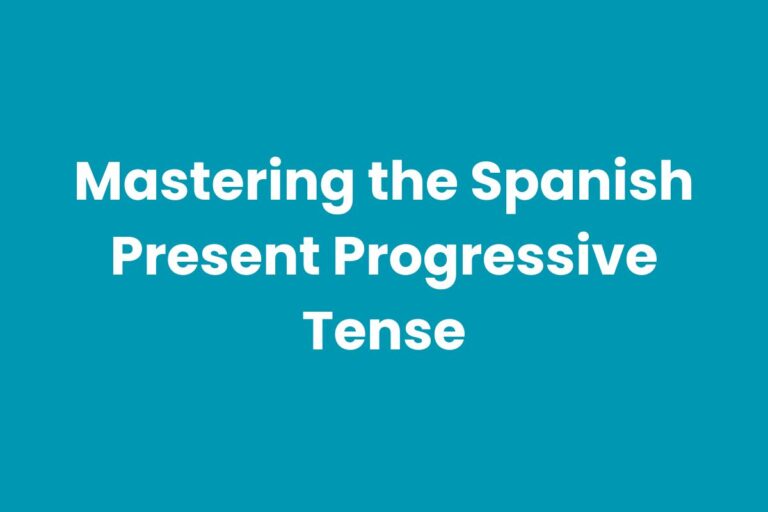Spanish Ordinal Numbers: A Comprehensive Guide
Understanding ordinal numbers in Spanish is crucial for expressing order, sequence, and position. Unlike cardinal numbers (one, two, three), ordinal numbers indicate where something ranks in a series (first, second, third).
This knowledge is essential for various everyday situations, from describing races and competitions to outlining chapters in a book or referring to floors in a building. Mastering Spanish ordinal numbers will significantly enhance your ability to communicate precisely and effectively in Spanish.
This guide provides a comprehensive overview of Spanish ordinal numbers, covering their definition, structure, usage, and common mistakes. It is designed for learners of all levels, from beginners who are just starting to grasp the basics to advanced students looking to refine their understanding.
Through clear explanations, numerous examples, and practical exercises, this article will equip you with the skills to confidently use ordinal numbers in your Spanish communication.
Table of Contents
- Definition of Ordinal Numbers in Spanish
- Structural Breakdown
- Types and Categories of Ordinal Numbers
- Examples of Ordinal Numbers
- Usage Rules for Ordinal Numbers
- Common Mistakes with Ordinal Numbers
- Practice Exercises
- Advanced Topics
- Frequently Asked Questions
- Conclusion
Definition of Ordinal Numbers in Spanish
Ordinal numbers in Spanish, like in English, indicate the position or order of something in a sequence. They answer the question “which one?” instead of “how many?” They are adjectives that typically precede the noun they modify, agreeing in gender and number.
Understanding ordinal numbers is essential for describing rankings, dates, and various other scenarios where order matters.
While cardinal numbers (uno, dos, tres) represent quantity, ordinal numbers (primero, segundo, tercero) denote position. For example, “tres libros” means “three books,” while “el tercer libro” means “the third book.” The distinction is crucial for clear and accurate communication.
Ordinal numbers function as adjectives, modifying nouns to specify their position in a sequence. They must agree in gender (masculine or feminine) and number (singular or plural) with the noun they modify. For instance, “el primer día” (the first day) uses the masculine singular form of the ordinal number, while “la primera semana” (the first week) uses the feminine singular form.
Ordinal numbers are used in a wide range of contexts, including: describing positions in a race or competition, indicating floors in a building, numbering chapters in a book, specifying dates, and referring to academic grades or years. They are fundamental for expressing order and sequence in many aspects of daily life.
Structural Breakdown
The structure of Spanish ordinal numbers is relatively straightforward, especially from primero (first) to décimo (tenth). Beyond tenth, the formation often involves using the cardinal number followed by the word “-ésimo”. However, there are some important details to consider.
Ordinal numbers from first to tenth have specific unique forms: primero, segundo, tercero, cuarto, quinto, sexto, séptimo, octavo, noveno, décimo. These are the most commonly used ordinal numbers, and it’s essential to memorize them.
From eleventh onwards, the ordinal numbers are generally formed by adding the suffix “-ésimo” to the cardinal number. For example, “once” (eleven) becomes “undécimo” (eleventh), and “doce” (twelve) becomes “duodécimo” (twelfth). While these forms exist, they are less commonly used in everyday speech. Instead, speakers often use cardinal numbers after tenth in many contexts.
Ordinal numbers must agree in gender and number with the noun they modify. Masculine singular forms like “primer” are used before masculine singular nouns, while feminine singular forms like “primera” are used before feminine singular nouns. Plural forms (primeros, primeras) are used with plural nouns. This agreement is critical for grammatical correctness.
There are some shortening rules for primero and tercero. When these ordinal numbers precede a masculine singular noun, they are shortened to primer and tercer, respectively. For example, “el primer libro” (the first book) and “el tercer piso” (the third floor). This shortening does not occur before feminine nouns.
Types and Categories of Ordinal Numbers
Spanish ordinal numbers can be categorized based on their form and usage. The most common categories are basic ordinal numbers (first to tenth) and those formed with the “-ésimo” suffix. Understanding these categories helps clarify their application.
Basic Ordinal Numbers (1st – 10th)
These are the most frequently used ordinal numbers and have unique forms. They are essential for everyday conversations and should be memorized. They have masculine and feminine forms, singular and plural forms, and are used in a variety of contexts. For example, primero/primera, segundo/segunda, tercero/tercera, cuarto/cuarta, quinto/quinta, sexto/sexta, séptimo/séptima, octavo/octava, noveno/novena, décimo/décima.
“-ésimo” Formed Ordinal Numbers (11th and beyond)
These ordinal numbers are formed by adding the suffix “-ésimo” to the cardinal number. While grammatically correct, they are less commonly used in spoken Spanish, especially for higher numbers. In many cases, cardinal numbers are used instead. Examples include: undécimo/undécima, duodécimo/duodécima, decimotercero/decimotercera.
Shortened Forms
The ordinal numbers primero and tercero have shortened forms (primer and tercer) that are used before masculine singular nouns. This is a common feature of Spanish grammar and must be remembered to avoid errors. Examples: el primer día, el tercer acto.
Compound Ordinal Numbers
Compound ordinal numbers are used for numbers greater than ten, and they can be complex. These are rarely used in common speech; instead, people use cardinal numbers after the tenth. An example is vigésimo primero (twenty-first), although you’d more commonly hear veintiuno in many contexts.
Examples of Ordinal Numbers
The best way to understand ordinal numbers is to see them in action. The following tables provide examples of how ordinal numbers are used in different contexts, highlighting their agreement with nouns and their specific forms.
Basic Ordinal Numbers (1st – 10th) Examples
The table below provides examples of the first ten ordinal numbers in both masculine and feminine forms, along with example sentences to illustrate their usage.
| Ordinal Number (Masculine) | Ordinal Number (Feminine) | Example Sentence | Translation |
|---|---|---|---|
| Primero | Primera | Él es el primero en la fila. | He is the first in line. |
| Segundo | Segunda | Ella vive en el segundo piso. | She lives on the second floor. |
| Tercero | Tercera | Este es el tercer intento. | This is the third attempt. |
| Cuarto | Cuarta | Es la cuarta vez que lo digo. | It’s the fourth time I’ve said it. |
| Quinto | Quinta | El quinto mandamiento es importante. | The fifth commandment is important. |
| Sexto | Sexta | Hoy es el sexto día del mes. | Today is the sixth day of the month. |
| Séptimo | Séptima | Ese es el séptimo libro de la serie. | That is the seventh book in the series. |
| Octavo | Octava | El octavo pasajero está listo. | The eighth passenger is ready. |
| Noveno | Novena | Es la novena sinfonía de Beethoven. | It’s Beethoven’s ninth symphony. |
| Décimo | Décima | Este es el décimo aniversario. | This is the tenth anniversary. |
| Primero | Primera | La primera impresión es importante. | The first impression is important. |
| Segundo | Segunda | El segundo plato está delicioso. | The second course is delicious. |
| Tercero | Tercera | La tercera guerra mundial sería devastadora. | The third world war would be devastating. |
| Cuarto | Cuarta | El cuarto hijo es muy travieso. | The fourth child is very naughty. |
| Quinto | Quinta | La quinta avenida es famosa. | Fifth avenue is famous. |
| Sexto | Sexta | El sexto sentido es misterioso. | The sixth sense is mysterious. |
| Séptimo | Séptima | La séptima maravilla del mundo es impresionante. | The seventh wonder of the world is impressive. |
| Octavo | Octava | El octavo mes del año es agosto. | The eighth month of the year is August. |
| Noveno | Novena | La novena nube es alta. | The ninth cloud is high. |
| Décimo | Décima | La décima calle es por allá. | The tenth street is over there. |
Examples of “-ésimo” Formed Ordinal Numbers
The following table provides examples of ordinal numbers formed with the “-ésimo” suffix. Remember that these forms are less common in spoken language, where cardinal numbers are often preferred after tenth.
| Ordinal Number (Masculine) | Ordinal Number (Feminine) | Example Sentence | Translation |
|---|---|---|---|
| Undécimo | Undécima | Es el undécimo mandamiento. | It’s the eleventh commandment. |
| Duodécimo | Duodécima | Este es el duodécimo intento. | This is the twelfth attempt. |
| Decimotercero | Decimotercera | Es la decimotercera página del libro. | It’s the thirteenth page of the book. |
| Vigésimo | Vigésima | El vigésimo aniversario es importante. | The twentieth anniversary is important. |
| Trigésimo | Trigésima | El trigésimo día del mes es mañana. | The thirtieth day of the month is tomorrow. |
| Cuadragésimo | Cuadragésima | El cuadragésimo cumpleaños es especial. | The fortieth birthday is special. |
| Quincuagésimo | Quincuagésima | El quincuagésimo aniversario de bodas es impresionante. | The fiftieth wedding anniversary is impressive. |
| Sexagésimo | Sexagésima | El sexagésimo capítulo del libro es el más largo. | The sixtieth chapter of the book is the longest. |
| Septuagésimo | Septuagésima | El septuagésimo cumpleaños fue una gran fiesta. | The seventieth birthday was a big party. |
| Octogésimo | Octogésima | El octogésimo aniversario de la empresa es el próximo año. | The eightieth anniversary of the company is next year. |
| Nonagésimo | Nonagésima | El nonagésimo cumpleaños de mi abuela fue increíble. | My grandmother’s ninetieth birthday was amazing. |
| Centésimo | Centésima | El centésimo cliente recibe un premio. | The hundredth customer receives a prize. |
| Milésimo | Milésima | Esta es la milésima vez que te lo digo. | This is the thousandth time I’m telling you. |
| Diezmilésimo | Diezmilésima | El diezmilésimo habitante de la ciudad fue celebrado. | The ten-thousandth inhabitant of the city was celebrated. |
| Cienmilésimo | Cienmilésima | El cienmilésimo libro vendido recibió una mención especial. | The hundred-thousandth book sold received a special mention. |
Examples of Shortened Forms (Primer & Tercer)
This table demonstrates the use of the shortened forms primer and tercer before masculine singular nouns.
| Ordinal Number | Example Sentence | Translation |
|---|---|---|
| Primer | Este es el primer día de clases. | This is the first day of classes. |
| Tercer | Vivo en el tercer piso. | I live on the third floor. |
| Primer | Es el primer amor. | It’s the first love. |
| Tercer | Es el tercer hijo de la familia. | He is the third son of the family. |
| Primer | El primer paso es el más difícil. | The first step is the most difficult. |
| Tercer | El tercer acto de la obra es el mejor. | The third act of the play is the best. |
Examples of Ordinal Numbers in Dates
The following table shows how ordinal numbers are used to express the first day of the month.
| Date in Spanish | Translation |
|---|---|
| El primero de enero | The first of January |
| El primero de mayo | The first of May |
| El primero de diciembre | The first of December |
Usage Rules for Ordinal Numbers
Using ordinal numbers correctly involves understanding their agreement with nouns, the shortening of certain forms, and the preference for cardinal numbers in certain contexts. Adhering to these rules will ensure clarity and accuracy in your Spanish communication.
Ordinal numbers must agree in gender and number with the noun they modify. Use the masculine form (primero, segundo) with masculine nouns and the feminine form (primera, segunda) with feminine nouns. Similarly, use the singular form with singular nouns and the plural form with plural nouns. For example: el primer libro (the first book), la primera casa (the first house), los primeros libros (the first books), las primeras casas (the first houses).
Remember that primero and tercero are shortened to primer and tercer, respectively, when they precede a masculine singular noun. This rule applies only when the ordinal number directly precedes the noun without any intervening words. For example: el primer día (the first day), el tercer piso (the third floor). The full forms primero and tercero are used before feminine nouns and when they do not directly precede the noun. For example la primera semana (the first week), el número tercero (the number three).
While ordinal numbers can be formed for numbers beyond tenth by adding the “-ésimo” suffix, it is more common to use cardinal numbers in everyday speech. This is especially true for higher numbers. For example, instead of saying “el vigésimo quinto aniversario” (the twenty-fifth anniversary), it is more common to say “el aniversario veinticinco.”
When writing dates, the first day of the month is expressed using the ordinal number primero. For example, “el primero de mayo” (the first of May). For all other days of the month, cardinal numbers are used. For example, “el dos de junio” (the second of June), “el quince de septiembre” (the fifteenth of September).
Common Mistakes with Ordinal Numbers
Even experienced Spanish learners can make mistakes with ordinal numbers. Recognizing these common errors and understanding how to correct them will help you improve your accuracy and fluency.
One of the most common mistakes is failing to agree the ordinal number with the noun in gender and number. For example, saying “el primera casa” instead of “la primera casa” is incorrect. Always ensure that the ordinal number matches the gender and number of the noun it modifies.
Another common error is forgetting to shorten primero and tercero to primer and tercer before masculine singular nouns. For example, saying “el primero día” instead of “el primer día” is a mistake. Remember to apply this shortening rule whenever applicable.
Overusing “-ésimo” forms for numbers beyond tenth can sound unnatural. While grammatically correct, it is often better to use cardinal numbers in everyday speech. For example, saying “el decimocuarto libro” can be replaced with the more natural “el libro catorce.”
Using ordinal numbers for all dates is incorrect. Only the first day of the month is expressed with an ordinal number. All other days are expressed with cardinal numbers. For example, saying “el segundo de marzo” instead of “el dos de marzo” is a common mistake.
Here are some examples of common mistakes and their corrections:
| Incorrect | Correct | Explanation |
|---|---|---|
| El primera libro | El primer libro | Agreement error: “primera” (feminine) should be “primer” (masculine shortened form) before a masculine singular noun. |
| La primero casa | La primera casa | Agreement error: “primero” (masculine) should be “primera” (feminine) to agree with “casa” (feminine). |
| El decimosegundo día | El duodécimo día / El día doce | While “decimosegundo” is grammatically correct, “duodécimo” or “el día doce” are more natural. |
| El segundo de mayo (referring to May 1st) | El primero de mayo | Only the first day of the month uses an ordinal number. |
Practice Exercises
Test your understanding of Spanish ordinal numbers with these practice exercises. Fill in the blanks with the correct ordinal number forms.
Exercise 1: Fill in the Blanks (Basic Ordinal Numbers)
Complete the following sentences with the correct form of the ordinal number.
| Question | Answer |
|---|---|
| Hoy es el ______ día de la semana. (one) | Hoy es el primer día de la semana. |
| Ella vive en el ______ piso. (two) | Ella vive en el segundo piso. |
| Este es mi ______ intento. (three) | Este es mi tercer intento. |
| Es la ______ vez que te lo digo. (four) | Es la cuarta vez que te lo digo. |
| El ______ mandamiento es importante. (five) | El quinto mandamiento es importante. |
| Hoy es el ______ día del mes. (six) | Hoy es el sexto día del mes. |
| Ese es el ______ libro de la serie. (seven) | Ese es el séptimo libro de la serie. |
| El ______ pasajero está listo. (eight) | El octavo pasajero está listo. |
| Es la ______ sinfonía de Beethoven. (nine) | Es la novena sinfonía de Beethoven. |
| Este es el ______ aniversario. (ten) | Este es el décimo aniversario. |
Exercise 2: Fill in the Blanks (Advanced Ordinal Numbers)
Complete the following sentences with the correct form of the ordinal number, using “-ésimo” when appropriate.
| Question | Answer |
|---|---|
| Es el ______ aniversario de la empresa. (twenty) | Es el vigésimo aniversario de la empresa. |
| El ______ capítulo es el más interesante. (thirty) | El trigésimo capítulo es el más interesante. |
| Celebramos el ______ cumpleaños de mi abuelo. (forty) | Celebramos el cuadragésimo cumpleaños de mi abuelo. |
| Este es el ______ cliente del día. (fifty) | Este es el quincuagésimo cliente del día. |
| Estamos en el ______ año de la universidad. (sixty) | Estamos en el sexagésimo año de la universidad. |
| Ese es el ______ corredor en llegar a la meta. (seventy) | Ese es el septuagésimo corredor en llegar a la meta. |
| Es el ______ aniversario de la fundación de la ciudad. (eighty) | Es el octogésimo aniversario de la fundación de la ciudad. |
| Este es el ______ habitante de la ciudad. (ninety) | Este es el nonagésimo habitante de la ciudad. |
| El ______ libro de la biblioteca es una joya. (one hundred) | El centésimo libro de la biblioteca es una joya. |
| Esta es la ______ vez que te lo advierto. (one thousand) | Esta es la milésima vez que te lo advierto. |
Exercise 3: Translate the sentences using ordinal numbers
Translate the following sentences into Spanish, using ordinal numbers where appropriate.
| Question | Answer |
|---|---|
| The first day of spring is beautiful. | El primer día de la primavera es hermoso. |
| She is the second student in the class. | Ella es la segunda estudiante en la clase. |
| This is the third time I visit this city. | Esta es la tercera vez que visito esta ciudad. |
| The fourth season is winter. | La cuarta estación es el invierno. |
| He won the fifth prize in the competition. | Él ganó el quinto premio en la competencia. |
| The sixth sense is mysterious. | El sexto sentido es misterioso. |
| The seventh continent is Antarctica. | El séptimo continente es la Antártida. |
| The eighth wonder of the world is amazing. | La octava maravilla del mundo es asombrosa. |
| The ninth planet is far from here. | El noveno planeta está lejos de aquí. |
| The tenth anniversary is a special date. | El décimo aniversario es una fecha especial. |
Advanced Topics
For advanced learners, understanding the nuances of ordinal number usage and their historical evolution can provide a deeper appreciation of the Spanish language.
While the “-ésimo” suffix is the standard way to form ordinal numbers beyond tenth, there are archaic forms that are occasionally encountered in literature or formal contexts. These forms, such as “onceno” (eleventh) and “doceno” (twelfth), are rarely used in modern Spanish but are worth recognizing.
The usage of ordinal numbers has evolved over time, with a gradual shift towards using cardinal numbers in many contexts. This trend reflects a simplification of the language and a preference for more concise expressions.
Understanding this historical context can help you appreciate the flexibility and adaptability of Spanish.
In some Latin American countries, there may be slight variations in the usage or preference for certain ordinal number forms. Being aware of these regional differences can help you communicate more effectively with speakers from different Spanish-speaking regions.
The Real Academia Española (RAE), the official institution responsible for regulating the Spanish language, provides guidelines and recommendations on the proper usage of ordinal numbers. Consulting the RAE’s publications can offer valuable insights into the nuances of Spanish grammar and usage.
Frequently Asked Questions
Here are some frequently asked questions about Spanish ordinal numbers.
- What is the difference between cardinal and ordinal numbers?
Cardinal numbers indicate quantity (how many), while ordinal numbers indicate position or order (which one). For example, “tres libros” (three books) uses a cardinal number, while “el tercer libro” (the third book) uses an ordinal number.
- How do I form ordinal numbers beyond tenth?
Generally, you add the suffix “-ésimo” to the cardinal number. However, it is more common to use cardinal numbers in everyday speech, especially for higher numbers. For example, instead of “el vigésimo quinto aniversario,” say “el aniversario veinticinco.”
- When do I use the shortened forms primer and tercer?
You use primer and tercer before masculine singular nouns. For example, “el primer día” (the first day) and “el tercer piso” (the third floor).
- How do I use ordinal numbers in dates?
Only the first day of the month is expressed with an ordinal number: “el primero de mayo” (the first of May). All other days are expressed with cardinal numbers: “el dos de junio” (the second of June).
- Do ordinal numbers agree in gender and number with the noun they modify?
Yes, ordinal numbers must agree in gender and number with the noun they modify. Use the masculine form with masculine nouns and the feminine form with feminine nouns. Use the singular form with singular nouns and the plural form with plural nouns.
- Is it always necessary to use the “-ésimo” suffix for numbers greater than ten?
No, it’s not always necessary. In everyday speech, it’s more common to use cardinal numbers after tenth. Using “-ésimo” forms for higher numbers can sound overly formal.
- Are there any regional variations in the usage of ordinal numbers?
Yes, there may be slight variations in the usage or preference for certain ordinal number forms in different Latin American countries. Being aware of these regional differences can help you communicate more effectively.
- What should I do if I’m unsure about the correct form of an ordinal number?
When in doubt, it’s often best to use cardinal numbers, especially for numbers beyond tenth. This is generally more acceptable and sounds more natural in everyday conversation. You can also consult a Spanish grammar guide or dictionary for clarification.
- Why are ordinal numbers important in Spanish?
Ordinal numbers are crucial for expressing order, sequence, and position. They are used in various everyday situations, from describing races and competitions to outlining chapters in a book or referring to floors in a building. Mastering Spanish ordinal numbers will significantly enhance your ability to communicate precisely and effectively in Spanish.
- How can I practice using ordinal numbers effectively?
Practice using ordinal numbers in real-life conversations and writing exercises. Try describing the order of events, numbering items in a list, or specifying dates using ordinal numbers. The more you use them, the more comfortable and confident you will become.
Conclusion
Mastering Spanish ordinal numbers is a significant step towards achieving fluency and precision in the language. By understanding their definition, structure, usage rules, and common mistakes, you can confidently use them in a variety of contexts. Remember to pay attention to gender and number agreement, shorten primero and tercero when necessary, and prefer cardinal numbers for higher numbers in everyday speech.
Continuous practice is key to mastering any grammar concept. Incorporate ordinal numbers into your daily Spanish conversations and writing exercises.
Review the examples and practice exercises provided in this guide regularly to reinforce your understanding. With consistent effort, you will develop a strong command of Spanish ordinal numbers and enhance your overall communication skills.
Keep exploring the nuances of the Spanish language and embrace the challenges of learning new grammar concepts. Every step you take will bring you closer to achieving your goal of fluency and proficiency in Spanish. ¡Buena suerte!


